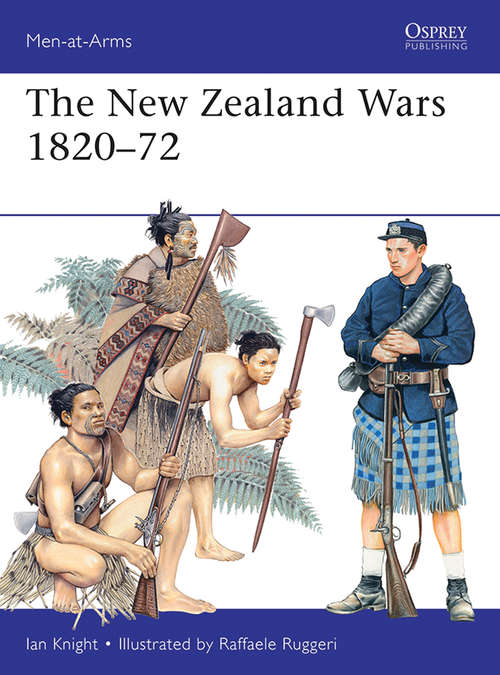The New Zealand Wars 1820-72
By: and
Sign Up Now!
Already a Member? Log In
You must be logged into Bookshare to access this title.
Learn about membership options,
or view our freely available titles.
- Synopsis
- Between 1845 and 1872, various groups of Maori - the Polynesian people who had inhabited New Zealand since medieval times - were involved in a series of wars of resistance against British settlers, which in many ways mirrored the American Indian Wars. Like some Native Americans, the Maori had a fierce and long-established warrior tradition (epitomized today by the intimidating haka war-challenge performed by the All Blacks rugby team), and lived in tribal communities dispersed throughout rough and thickly wooded terrain. Subduing them took a lengthy British Army commitment, only surpassed in the Victorian period by that on the North-West Frontier of India.Warfare had been endemic in pre-colonial New Zealand - in contests over territory and group prestige, and in generations-long feuds - and Maori groups maintained fortified villages or pas. The small early British coastal settlements, also widely dispersed, were tolerated, and in the 1820s a chief named Hongi Hika travelled to Britain with a missionary and returned laden with gifts. He promptly exchanged these for muskets, and began an aggressive 15-year expansion at the expense of neighbouring tribes. When new waves of major British settlement arrived between the 1840s and 1860s, competition over the available productive land caused increased friction and clashes. British troops were shipped in, and fought a series of essentially local wars in both North and South Islands over more than 25 years. However, some Maori groups always allied themselves with the Europeans, in pursuit of ancient enmities with their neighbours.By the 1860s many Maori had acquired firearms and had perfected their bush-warfare tactics. Their defences also evolved, with conspicuous log fortifications giving way to deep entrenchments less visible and vulnerable to artillery. The British, too, were adapting their uniforms, equipment and tactics to broken-country fighting in the bush, and employing more portable artillery and mortars. In the last phase of the wars a religious movement, Pai Maarire ('Hau Hau'), inspired remarkable guerrilla leaders such as Te Kooti Arikirangi to renewed resistance. This final phase saw a reduction in British Army forces as operations were increasingly taken over by locally recruited constabulary and militia units. European victory was not total, but led to a negotiated peace that preserved some of the Maori people's territories and freedoms; in modern times this has allowed a real (if sometimes strained) progress towards a genuinely unified national identity.
- Copyright:
- 2013
Book Details
- Book Quality:
- Publisher Quality
- ISBN-13:
- 9781780962795
- Related ISBNs:
- 9781780962771
- Publisher:
- Osprey Publishing
- Date of Addition:
- 03/20/13
- Copyrighted By:
- Osprey Publishing
- Adult content:
- No
- Language:
- English
- Has Image Descriptions:
- No
- Categories:
- History, Military, Nonfiction, Australiana
- Submitted By:
- Bookshare Staff
- Usage Restrictions:
- This is a copyrighted book.
Reviews
Other Books
- by Ian Knight
- by Raffaele Ruggeri
- in History
- in Military
- in Nonfiction
- in Australiana
